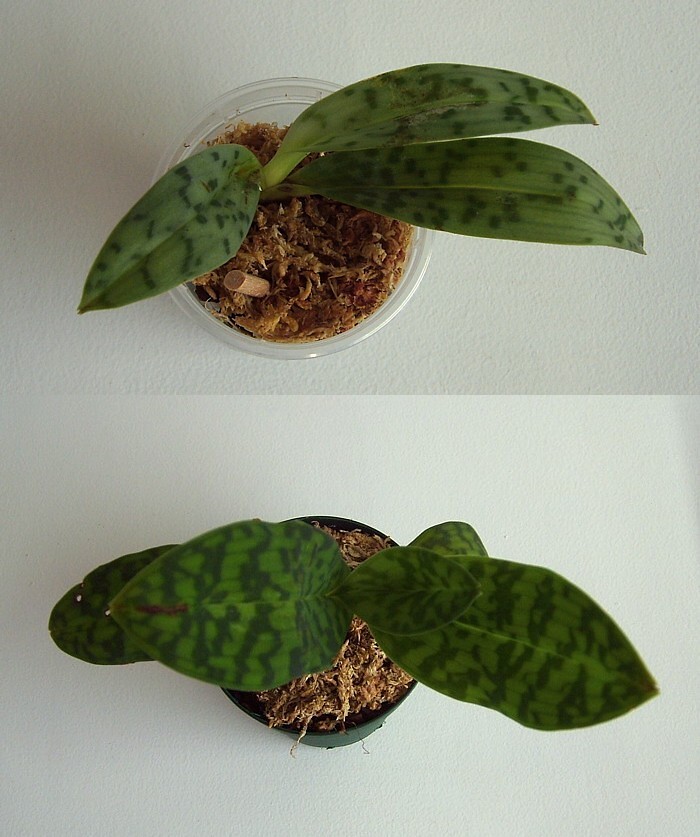The Mutant
Well-Known Member
I know it's impossible to tell from just the foliage, but I thought I should ask. I've had hookerae on my wishlist for a while and decided to strike right after new year and bought a BS one.
It turned out to be two different Paphs stuffed together in one pot. I'm uncertain about if they could both be hookerae considering how different their foliage are. I think the larger one (the one at the bottom of the picture) is BS so I haven't been tricked by the vendor but do I have one or two hookeraes now? I don't know if the small one will make it since it only has three rather small leaves.
Both are rather scruffy looking, but I was expecting that:

The small one is in a 5cm (2") pot and the larger one in a 7.5cm (3") pot.
It turned out to be two different Paphs stuffed together in one pot. I'm uncertain about if they could both be hookerae considering how different their foliage are. I think the larger one (the one at the bottom of the picture) is BS so I haven't been tricked by the vendor but do I have one or two hookeraes now? I don't know if the small one will make it since it only has three rather small leaves.
Both are rather scruffy looking, but I was expecting that:

The small one is in a 5cm (2") pot and the larger one in a 7.5cm (3") pot.



